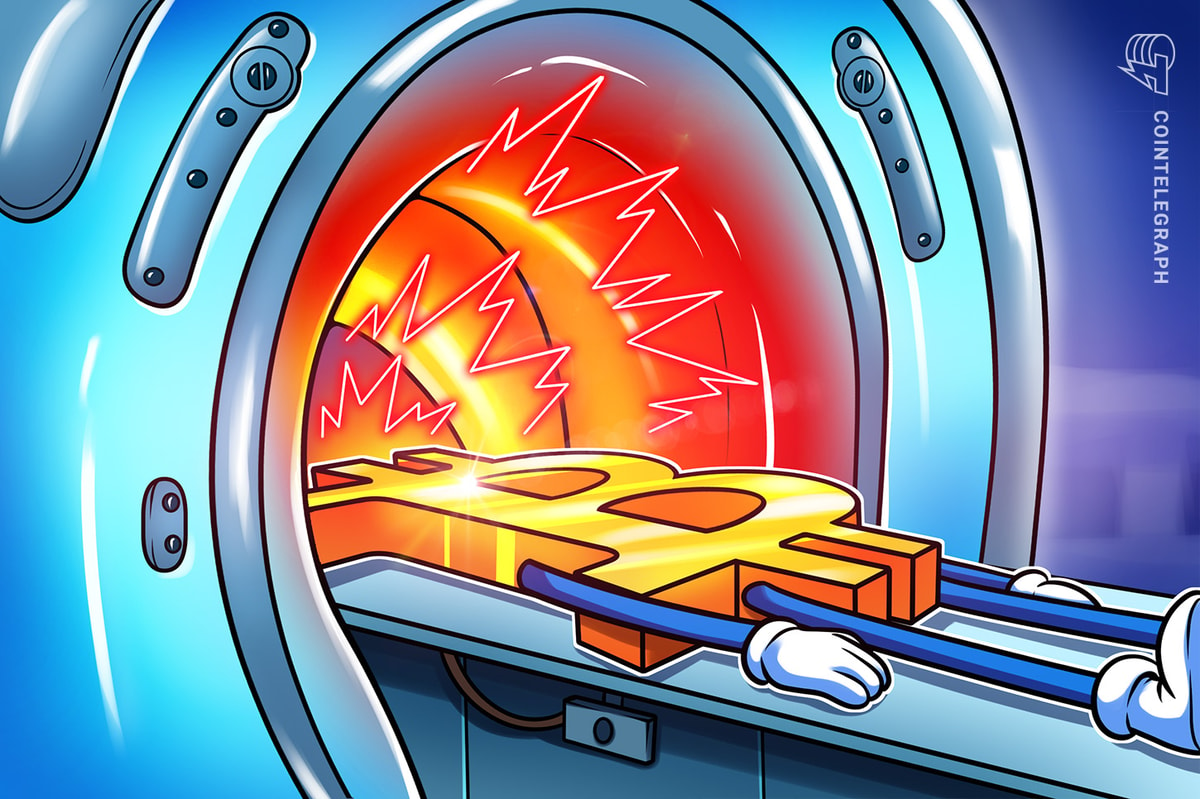Is your gaming PC capable of mining crypto?
As of May 2025, Bitcoin mining is looking attractive again. With Bitcoin (BTC) trading around $95,000 and transaction fees hitting new highs after the 2024 halving, mining rewards — though smaller — are worth chasing. From home setups to industrial-scale farms, the question of whether Bitcoin mining is profitable is back in the spotlight.
And if you’re a gamer, chances are you’ve looked at your rig and wondered: Can a gaming PC mine crypto? After all, modern gaming computers are packed with powerful GPUs, solid cooling and lots of downtime, especially if you’re not gaming daily. It’s a fair question: Can you mine Bitcoin with a gaming PC?
The short answer: Yes, but it won’t be worth it.
The long answer:
Understanding Bitcoin mining
Mining is the process that adds new BTC to circulation. More importantly, it’s how the Bitcoin network stays secure and functions without a central authority. Every time someone sends or receives Bitcoin, miners verify and record that transaction.
This is all powered by proof-of-work (PoW), a consensus mechanism where miners race to encode transactions in a format that is acceptable to the network. It’s essentially just a massive guessing game, where miners try different inputs until one generates a hash with enough leading zeroes to meet the network’s current difficulty target.
For example, a valid Bitcoin block might start with something like 00000000000000000000956e9ff76455…. The first miner to hit that valid hash wins the reward: currently 3.125 BTC, plus transaction fees.
The issue is, to generate that many leading zeroes in 2025, you’re looking at around 10³¹ hash attempts on average to produce a valid hash.
As you can imagine, that takes a lot of power.
Did you know? The energy used to mine a single Bitcoin block today could power an average US household for over 10 years. That’s the cost of making sure the network stays decentralized and tamper-proof.
From CPUs to ASICs: How mining hardware evolved
It didn’t use to be this hard to mine Bitcoin. As more miners joined the network and the total computing power surged, the protocol automatically ramped up the difficulty.
That’s by design. Bitcoin adjusts to keep block times steady at around 10 minutes, no matter how much horsepower is thrown at it.
Back in 2009, Bitcoin mining for beginners meant using a regular laptop CPU. Then came the rise of GPUs — graphics cards originally built for gaming — which dramatically improved mining performance.
But then came ASICs, application-specific integrated circuits, designed solely to mine Bitcoin. These machines are vastly more powerful and energy-efficient than any GPU. By 2015, they had effectively taken over the mining scene.
Fast forward to 2025: ASICs still reign supreme. If you’re wondering about the best setup for mining Bitcoin on PC, know that ASIC vs. GPU mining isn’t a fair fight anymore. That doesn’t mean your gaming rig is useless, but it does mean you’ll want to consider alternative strategies.
Did you know? After Sept. 30, 2025, 4GB GPUs will no longer work due to DAG size limits.
Gaming PCs vs. ASIC miners
Bitcoin mining with a gaming PC, even with a high-end GPU like the RTX 4090, is inefficient and unlikely to be profitable due to low performance, high energy costs and hardware wear-and-tear compared to ASIC miners.
Performance: Can your GPU keep up?
Let’s say you’re using an Nvidia GeForce RTX 4090 — top of the line. Sounds heavy-duty, right?
Not for Bitcoin GPU mining.
That card might do well on other algorithms like Ethash (used in Ethereum Classic), but when it comes to Bitcoin’s SHA-256, it barely scratches the surface. Even the mighty RTX 4090 gets crushed by ASICs. A high-end ASIC like the Antminer S21 Pro pumps out 200 terahashes per second (TH/s) — that’s trillions of hashes per second, compared to maybe a few hundred megahashes per second from a GPU. That’s a millionfold difference.

Efficiency: The electricity bill tells the real story
Let’s talk about power. A GPU like the 4090 pulls around 450 watts. But the hashing performance it delivers is minuscule compared to the watts consumed. ASICs, by contrast, draw more power (e.g., 3,500 watts) but deliver far better output — roughly 17.5 joules per terahash.
In short, even if you’re mining Bitcoin on a gaming PC 24/7, the energy cost per dollar earned is painful. Is Bitcoin mining profitable with a gaming PC? Not really. Especially when you factor in cooling, hardware strain and your local energy prices.
Economics: Does it make any sense?
Even with low electricity rates, the ROI on mining Bitcoin from home with a gaming computer is near zero — if not outright negative. Solo mining? Forget it. The chances of hitting a block are microscopic. Pool mining? Your contribution is so small compared to ASIC farms that the payouts will be negligible.
And then there’s the wear and tear. GPUs weren’t designed to run at full capacity around the clock. Long-term mining can shorten their lifespan and may void warranties.
Did you know? WhatToMine is a useful site that shows what coins are most profitable to mine with your exact setup. Just plug in your GPU, and it does the rest.
Alternative cryptocurrencies for gaming PCs
If Bitcoin mining on PC feels like bringing a Nerf gun to a tank fight, don’t lose hope. There are still coins designed to be mined with GPUs in 2025 — and some even reward users fairly for it.
Let’s take a look at such cryptocurrencies:
Ethereum Classic (ETC): GPU-friendly legacy chain
Still using the Ethash algorithm, Ethereum Classic (ETC) is a solid option for GPU miners. Blocks are mined every 13 seconds with a 3.2 ETC reward.
Ravencoin (RVN): Built for the people
Ravencoin uses KAWPOW, an algorithm specifically designed to resist ASIC domination. It’s friendly to GPU miners and offers quick one-minute blocks with 2,500 Ravencoin (RVN) rewards. Mining altcoins with GPU setups is still very viable here.
Monero (XMR): Privacy-first and CPU/GPU accessible
Monero relies on the RandomX algorithm, making it accessible to both CPU and GPU miners. You won’t get rich, but it’s a way to earn passively, especially if you’ve got cheap electricity and want passive income from mining.




